60-Day Installation Guarantee
Once your project is approved and ready to submit for permitting, if we don’t initiate installation in 60 days or less, we’ll pay your entire first year of solar payments up to $2,000.



Once your project is approved and ready to submit for permitting, if we don’t initiate installation in 60 days or less, we’ll pay your entire first year of solar payments up to $2,000.
We fix or repair anything that fails in the system for 25 years. We include parts, labor, and the performance of the solar system.
Find answers to our most frequently asked questions about solar costs, financing options, the quoting process, installation and more. Additionally, we explain how Supreme Solar can assist you in navigating the entire process, empowering you to go solar with confidence.
Batteries for solar systems act like storage units, storing excess solar power for later use. During the day, they store surplus energy that your home doesn’t use immediately. This stored energy is then used at night or during low sunlight periods. This cycle of storing and using energy is known as charge-discharge. It’s important to note that while most batteries are used for self-consumption, backup batteries are designed specifically to reserve a percentage of power for emergencies. These backup-capable batteries ensure your home stays powered during blackouts or other unforeseen events.
Your roof’s suitability for solar mainly depends on two things. First, there needs to be enough sunlight hitting the roof to generate the electricity you need. Second, check for any shade from trees or nearby things that might block the sun and affect how well the solar panels work. Most homes can support solar panels structurally, so the big things to look at are sunlight and shade in the areas where panels would go.
You don’t need to replace your roof before installing solar panels. Typically, roofs less than 15 to 20 years old are suitable. However, if your roof is over 25 years old, it may need a closer inspection to determine if it’s still in good condition for solar installation or if replacing it would be advisable. This assessment is crucial to ensure your roof supports and protects your solar investment effectively.
Solar panels don’t work during a power outage. Most solar systems are meant for self-use only, even those with batteries. Only systems specifically set up with batteries for backup power will work during an outage. If having backup power during outages matters to you, make sure your system is set up with this capability from the beginning and includes emergency reserves.
If you sell your home after installing solar, there are a few options. If you own the system, you can pay it off during the home sale through escrow. This can increase the home’s value since it includes a paid-off solar system. If the system is leased or rented, you typically transfer the lease to the new owner, who takes over the existing agreement.
Yes, you’ll still have an electricity bill, but it’s usually quite low, typically ranging from $10 to $30 per month, depending on the season. When your solar system is sized correctly, it can supply 95% to 99% of your home’s electricity needs, including what’s stored in the battery. There will still be a connection fee to stay connected to the grid, but overall, switching to solar significantly reduces your electricity costs.
With recent changes to the net metering policy, it’s now more financially beneficial to install a battery and store your excess solar power rather than sending it to the grid. Storing power in a battery is a better financial option, so we recommend pairing your solar system with a battery under the new net metering policy.
To determine if your roof is suited for solar, we consider sun exposure, shade, and roof type. Your roof needs enough sunlight to produce power, so we check for any obstructions or shade. Composite and tile roofs are ideal for solar installation, while wood shake roofs are typically not suitable.
The quoting process involves a few steps. First, we gather your home’s energy usage data from the past year. If you don’t have a full year of data, we estimate based on your home’s size and appliances. Next, we design a custom solar system for you. We then review the design and financing options together to find the best fit for your needs. If everything looks good and fits your financial goals, we start the project.
We need 12 months of energy data if you’ve been in your home for at least a year. This helps us accurately estimate your energy use and design the right system. If you haven’t been in your home for a full year, we’ll estimate based on your home’s size and appliances. We also consider future needs, like an electric vehicle, to ensure your system is the right fit.
We can provide a quote over the phone, on a video call, or in person. We prefer video calls or in-person meetings because they allow us to explain the details more clearly. However, we prioritize convenience for you, so we can deliver the proposal in whichever way you prefer.
We typically determine your home’s usage by obtaining usage data from your utility company, showing how much energy your home has used over the past 12 months. This allows us to design a solar system that meets your yearly consumption. If you don’t have 12 months of data, we can estimate your usage based on your home’s size and appliances.
The size of your solar system depends on how much electricity your home uses, including appliances like AC units, electric stoves, dryers, electric water heaters, lights, Wi-Fi, garage appliances, and even electric vehicles. Typically, you size the system to produce between 100 and 110 percent of your total annual home consumption. This covers all your electrical needs and prepares for any future increases or upgrades in energy usage.
Your battery backup proposal should include a solar system that covers 100% of your home’s energy use, a battery, and a way to provide power during outages. The backup system will ensure essential appliances stay powered during an outage. It should also include a backup mode for the battery and a reserve of 25-30% to keep power available in case of an outage.
Most solar systems can be installed in less than 60 days. If an electrical upgrade or re-roofing is needed, it might take a bit longer due to the permitting process and coordinating with the utility for power disconnection and reconnection. However, the majority of our clients see their installation completed within 60 days from financing approval or deposit payment.
We create structural and electrical plans to submit to the city or county building department. They perform a plan check to ensure everything meets code requirements. Once approved, they issue a permit. After receiving the permit, we proceed with installation. Following installation, the city or county will inspect the system to ensure it was installed according to the plans and is up to code.
You can finance your solar system in a few ways:
1. **Purchase cash **: Buy it with cash upfront
2. **purchase Loan**: Get a loan for 20 to 25 years with a low monthly payment and no upfront cost.
3. **Power Purchase Agreement (PPA)**: Rent the system with no upfront cost and pay for the power it generates at a lower rate than your utility.
These options let you choose how to pay for solar based on what works best for your budget and needs.
Most finance companies usually look for a credit score between 640 and 650 for solar financing, whether it’s for a purchase loan or a Power Purchase Agreement (PPA). They also typically want applicants to have a debt-to-income ratio of less than 55%. These criteria help determine if you qualify for solar financing.
The most common incentive is the 30% federal tax credit for investing in solar. On average, homeowners can expect to receive between $8,000 and $12,000 in tax credits, depending on the size of the solar project. This credit applies to the total cost of the solar system, including any necessary electrical upgrades for your home.
Supreme Solar and Electric is a licensed C10 electrical contractor and C46 solar contractor. This means we can handle all permits for your electrical and solar projects in-house, offering you a seamless experience without the need for subcontractors. You can bundle your solar and electrical services with us for convenience and efficiency.
No, Supreme Solar and Electric does not use subcontractors. Our in-house team handles everything, including electrical upgrades, solar system installation, service calls, repairs, maintenance, and critter guard installation. All services are provided by our dedicated team, ensuring quality and consistency.
Yes, Supreme Solar and Electric provides a 25-year product and labor warranty, along with a performance warranty on the solar panels. We also offer a 10-year roof penetration warranty and a lifetime system monitoring warranty. As long as you have the system, we will monitor it for you. If anything fails or breaks, we will fix it under our warranty. Equipment failures are covered by the manufacturer warranty, but the labor to fix them is covered by our warranty.
Yes, solar systems do need maintenance, but it’s minimal because they mostly run on their own. The main task is cleaning, recommended two to three times a year, typically in March and June, and after summer if panels get dirty. Rain usually keeps panels clean in winter. If you notice a red LED light on the inverter indicating a production issue, contact us for a physical inspection to ensure everything is working correctly.
Maintaining solar panels is affordable. The main upkeep is cleaning, recommended two to three times a year. At Supreme Solar and Electric, we charge about four to five dollars per panel for cleaning, depending on factors like home size and number of arrays. This cleaning is typically all that’s needed for solar panel maintenance.
If your solar system has problems, you can contact our support line. We offer support seven days a week. During the week, we usually respond within one to two hours, and on weekends, within 24 to 48 hours. We will troubleshoot and fix the system. If you have monitoring set up, we can quickly identify and address any issues with specific panels.
A solar panel system usually has a 25-year warranty covering all equipment, like panels and inverters. These systems are built to last between 30 to 40 years, depending on weather and where they’re installed.


We’re committed to taking exceptional care of our customers and we think it shows in our reviews.
![]()
![]()
![]()
![]()
![]()
![]()
![]()
![]()
![]()
![]()
![]()
![]()
Amazing work You can’t go wrong with Supreme Solar! Their work is by far some of the best work. Our scheduled solar cleanings help us with producing our max energy. Highly recommend!!
![]()
Very satisfied with the service, anybody I spoke to was very informational and always answered every question I had. They had GREAT communication! That is something I’m very happy with this company about.
![]()
Excellent customer service, with no pressure to buy additional services. Josh provided me with additional information on how to best keep my system running. Would definitely recommend to all family and friends.
![]()
I recently had the pleasure of working with Michael and his team at Supreme Solar & Electric, and I cannot express how impressed I am with their exceptional service and commitment to providing top-notch energy solutions. From start to finish, their team demonstrated professionalism, expertise, and a genuine passion for customer satisfaction.
![]()
Amazing work You can’t go wrong with Supreme Solar! Their work is by far some of the best work. Our scheduled solar cleanings help us with producing our max energy. Highly recommend!!
![]()
Michael and his crew are absolutely incredible. They’re knowledgeable, courteous, professional, and transparent. It’s a breath of fresh air to have people like this help you when navigating the solar industry.
![]()
Supreme Solar And Electric provided to us with the best pricing and plans for building a solar pergola. The sales and installation staff were very outstanding and very transparent in dealing with us. The installers were very hard working, knowledgeable, and did a great job. Without reservation, I would recommend Supreme Solar and Electric for designing and installing solar installations.
![]()
Outstanding service from Supreme Solar & Electric! Very easy to book an appointment, Josh showed up on time and ready to work. Work was done fast and very professionally. My solar panels got a complete makeover! Looking forward to maximizing my Solar output for the rest of the summer.
![]()
![]()
It was a pleasure doing business with Supreme Solar nice group of guys very knowledgeable unlike other solar companies. Highly recommend!!!
![]()
Amazing service and work done by these guys. I received great attention from the sales rep, he kept me posted on all visits from his installers, Edison and city inspectors. The installers took 1 day for 30 panels install. They kept the install clean and had zero issues. Very satisfied with the whole process and will definitely recommend to anyone looking for solar.
![]()
We financed our solar system and have had it installed for almost two years. We have had a credit true up this far. This company is very professional and the customer service is phenomenal. From the initial purchase to installation, they obtained permits, offered financing options, communicated with us every step of the way and had our system live within two weeks.
![]()
Mike and the team were EXTREMELY helpful and knowledgeable. All our questions were answered immediately, and we were never left with any concerns. The installation was quick (only a few hours for 30+ panels) and the install team was friendly. As a bonus, the system is super affordable and looks great – not an eye sore like some systems you see. I will 100% recommend to anyone considering Solar!
![]()
Michael and his team handle everything with ease. Stress free, from start to finish it was about 4 weeks. Very professional and knowledgeable with their product. Would recommend anyone looking into solar to call these guys first.
![]()
Just wanted to say I would recommend this company to anyone! They answered all of my questions, very knowledgeable, and even showed me how the monitoring system worked. Their financing was $0 down and the payment was lower than my electric bill. Definitely gonna be recommending to my friends and family.




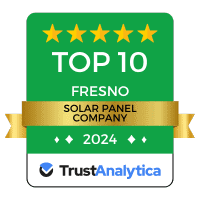

![]()
![]()
![]()
![]()
![]()
![]()
![]()
![]()
![]()
![]()
![]()
![]()
Amazing work You can’t go wrong with Supreme Solar! Their work is by far some of the best work. Our scheduled solar cleanings help us with producing our max energy. Highly recommend!!
![]()
Very satisfied with the service, anybody I spoke to was very informational and always answered every question I had. They had GREAT communication! That is something I’m very happy with this company about.
![]()
Excellent customer service, with no pressure to buy additional services. Josh provided me with additional information on how to best keep my system running. Would definitely recommend to all family and friends.
![]()
I recently had the pleasure of working with Michael and his team at Supreme Solar & Electric, and I cannot express how impressed I am with their exceptional service and commitment to providing top-notch energy solutions. From start to finish, their team demonstrated professionalism, expertise, and a genuine passion for customer satisfaction.
![]()
Amazing work You can’t go wrong with Supreme Solar! Their work is by far some of the best work. Our scheduled solar cleanings help us with producing our max energy. Highly recommend!!
![]()
Michael and his crew are absolutely incredible. They’re knowledgeable, courteous, professional, and transparent. It’s a breath of fresh air to have people like this help you when navigating the solar industry.
![]()
Supreme Solar And Electric provided to us with the best pricing and plans for building a solar pergola. The sales and installation staff were very outstanding and very transparent in dealing with us. The installers were very hard working, knowledgeable, and did a great job. Without reservation, I would recommend Supreme Solar and Electric for designing and installing solar installations.
![]()
Outstanding service from Supreme Solar & Electric! Very easy to book an appointment, Josh showed up on time and ready to work. Work was done fast and very professionally. My solar panels got a complete makeover! Looking forward to maximizing my Solar output for the rest of the summer.
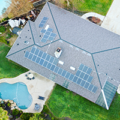
![]()
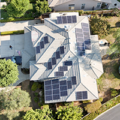
![]()
It was a pleasure doing business with Supreme Solar nice group of guys very knowledgeable unlike other solar companies. Highly recommend!!!
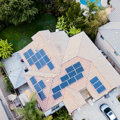
![]()
Amazing service and work done by these guys. I received great attention from the sales rep, he kept me posted on all visits from his installers, Edison and city inspectors. The installers took 1 day for 30 panels install. They kept the install clean and had zero issues. Very satisfied with the whole process and will definitely recommend to anyone looking for solar.
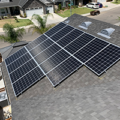
![]()
We financed our solar system and have had it installed for almost two years. We have had a credit true up this far. This company is very professional and the customer service is phenomenal. From the initial purchase to installation, they obtained permits, offered financing options, communicated with us every step of the way and had our system live within two weeks.

![]()
Mike and the team were EXTREMELY helpful and knowledgeable. All our questions were answered immediately, and we were never left with any concerns. The installation was quick (only a few hours for 30+ panels) and the install team was friendly. As a bonus, the system is super affordable and looks great – not an eye sore like some systems you see. I will 100% recommend to anyone considering Solar!
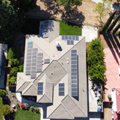
![]()
Michael and his team handle everything with ease. Stress free, from start to finish it was about 4 weeks. Very professional and knowledgeable with their product. Would recommend anyone looking into solar to call these guys first.
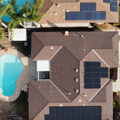
![]()
Just wanted to say I would recommend this company to anyone! They answered all of my questions, very knowledgeable, and even showed me how the monitoring system worked. Their financing was $0 down and the payment was lower than my electric bill. Definitely gonna be recommending to my friends and family.
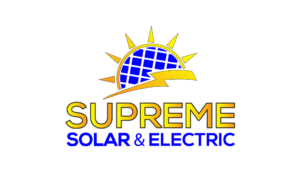
CSLB#1076925